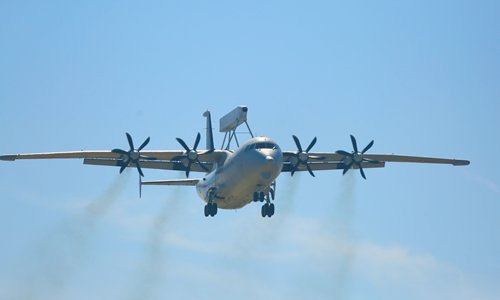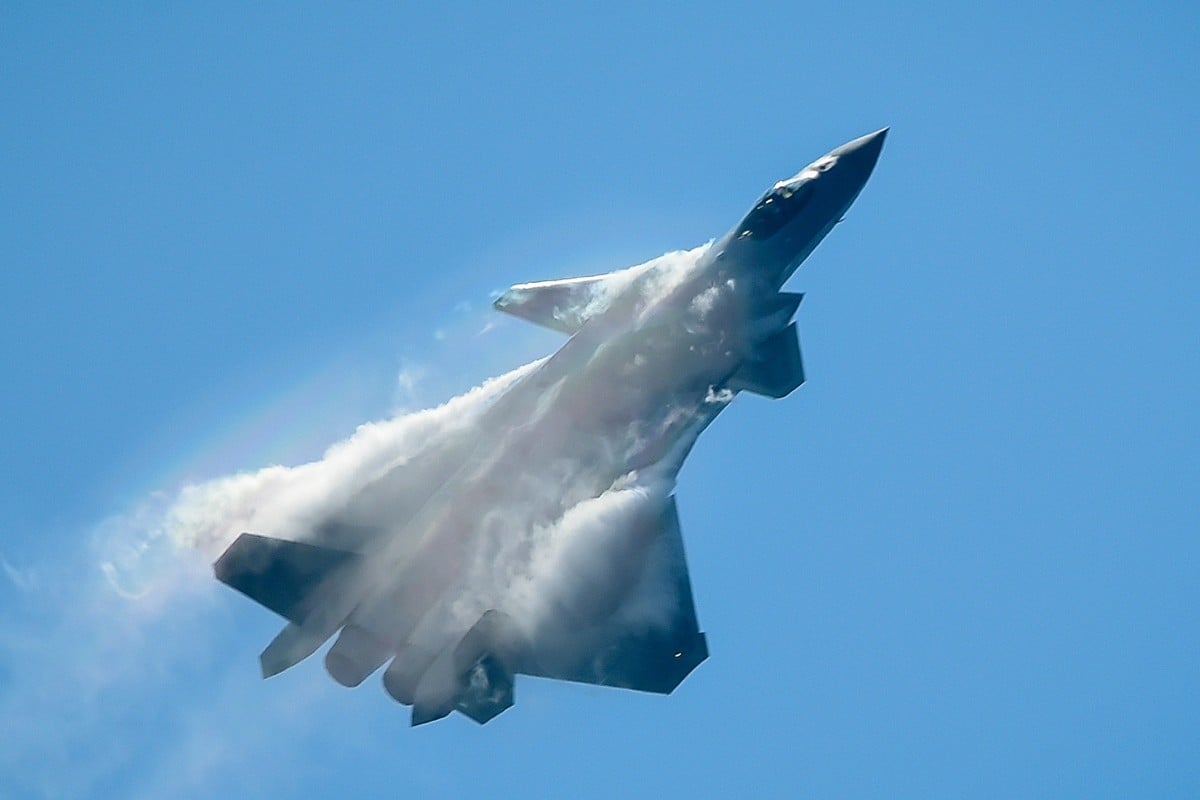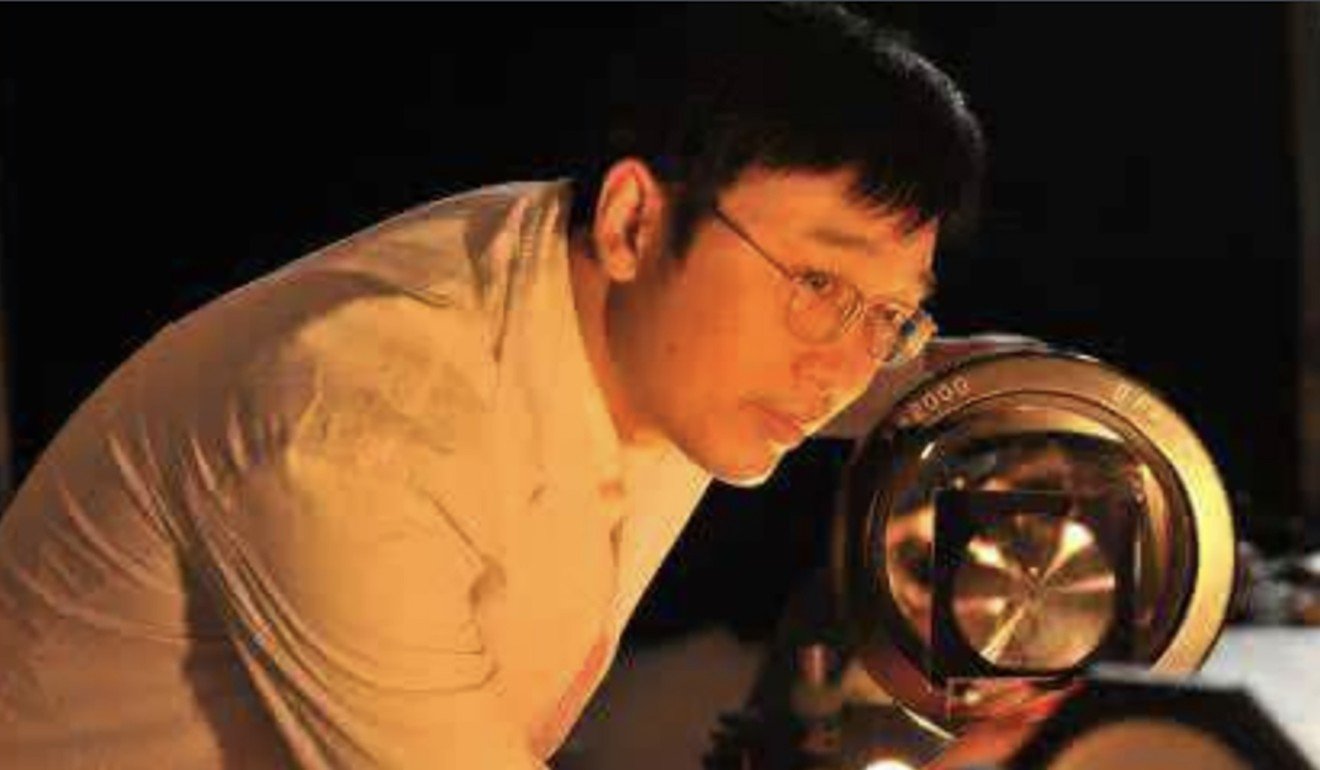Hendrik_2000
Lieutenant General
Now this is real game changer if it ever built in the future vai Jsch
Chinese radar firm gives a glimpse on future AEW aircraft
By Liu Xuanzun Source:Global Times Published: 2019/7/17 19:23:40

A KJ-200 airborne early warning (AEW) aircraft attached to a Navy aviation regiment under the PLA Northern Theater Command soars over the sky of Jiaodong Peninsula, east China's Shandong province during an air patrol mission in the 2018 Spring Festival holiday. Photo:eng.chinamil.com.cn
Future airborne early warning (AEW) aircraft could become unmanned, interconnected and highly intelligent, and will no longer need the traditional mounted radome, giving their greater aerodynamic and stealth capabilities, said China's top radar firm. Chinese military observers said on Wednesday that China is likely developing such aircraft.
In an article introducing AEW system aircraft written by the 14th Research Institute of China Electronics Technology Group Corporation (CETC) and posted on its public WeChat account on Tuesday, the company not only gave an overview on the history and facts of AEW carrying aircraft around the world, but also shared its vision on how this type of warplane could develop in the future.
Future AEW aircraft will become conformal, meaning antennas and sensors will be integrated into the aircraft's fuselage, the article said, noting that this will contribute to the warplane's aerodynamic and stealth capabilities and allow it to carry larger payloads.
AEW system aircraft usually have a radome -- where antennas and sensors are stored -- mounted on top of its fuselage. A military expert who asked not to be named told the Global Times that this structure results in extra air drag and reflects more radar waves, making the aircraft cumbersome and easy to detect.
Future AEW aircraft will be more interconnected to a combat network, making it capable of receiving data from land, sea, air and space-based platforms, which can then provide support to combatants, according to the CETC article.
The article gave this example: A fighter jet could use target information received from AEW aircraft to deliver a strike without using its own radar, which could be suppressed in electronic warfare or intentionally shut down to maintain stealth, analysts said.
Radars on AEW aircraft will also become smarter, allowing them to scan and identify targets intelligently, while independently protecting themselves from jamming, the article said, adding they will also be able to better allocate resources and will be more user-friendly.
Without a human pilot or crew, the aircraft will likely be smaller and stealthier, the article said.
China now operates multiple types of AEW aircraft including the KJ-200, KJ-500 and KJ-2000. CETC previously announced it has developed unmanned AEW aircraft, the JY-300.
Chinese radar firm gives a glimpse on future AEW aircraft
By Liu Xuanzun Source:Global Times Published: 2019/7/17 19:23:40

A KJ-200 airborne early warning (AEW) aircraft attached to a Navy aviation regiment under the PLA Northern Theater Command soars over the sky of Jiaodong Peninsula, east China's Shandong province during an air patrol mission in the 2018 Spring Festival holiday. Photo:eng.chinamil.com.cn
Future airborne early warning (AEW) aircraft could become unmanned, interconnected and highly intelligent, and will no longer need the traditional mounted radome, giving their greater aerodynamic and stealth capabilities, said China's top radar firm. Chinese military observers said on Wednesday that China is likely developing such aircraft.
In an article introducing AEW system aircraft written by the 14th Research Institute of China Electronics Technology Group Corporation (CETC) and posted on its public WeChat account on Tuesday, the company not only gave an overview on the history and facts of AEW carrying aircraft around the world, but also shared its vision on how this type of warplane could develop in the future.
Future AEW aircraft will become conformal, meaning antennas and sensors will be integrated into the aircraft's fuselage, the article said, noting that this will contribute to the warplane's aerodynamic and stealth capabilities and allow it to carry larger payloads.
AEW system aircraft usually have a radome -- where antennas and sensors are stored -- mounted on top of its fuselage. A military expert who asked not to be named told the Global Times that this structure results in extra air drag and reflects more radar waves, making the aircraft cumbersome and easy to detect.
Future AEW aircraft will be more interconnected to a combat network, making it capable of receiving data from land, sea, air and space-based platforms, which can then provide support to combatants, according to the CETC article.
The article gave this example: A fighter jet could use target information received from AEW aircraft to deliver a strike without using its own radar, which could be suppressed in electronic warfare or intentionally shut down to maintain stealth, analysts said.
Radars on AEW aircraft will also become smarter, allowing them to scan and identify targets intelligently, while independently protecting themselves from jamming, the article said, adding they will also be able to better allocate resources and will be more user-friendly.
Without a human pilot or crew, the aircraft will likely be smaller and stealthier, the article said.
China now operates multiple types of AEW aircraft including the KJ-200, KJ-500 and KJ-2000. CETC previously announced it has developed unmanned AEW aircraft, the JY-300.













